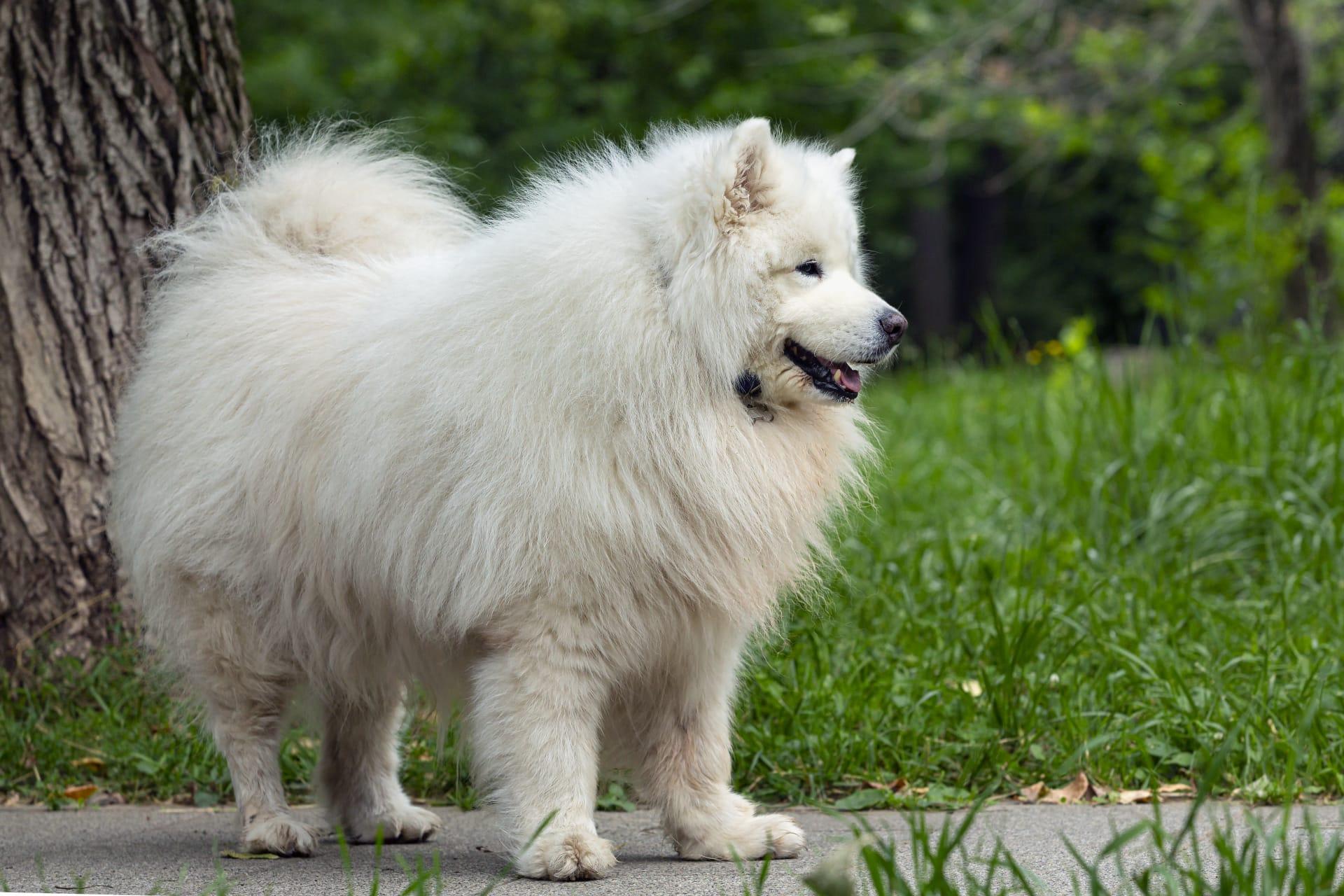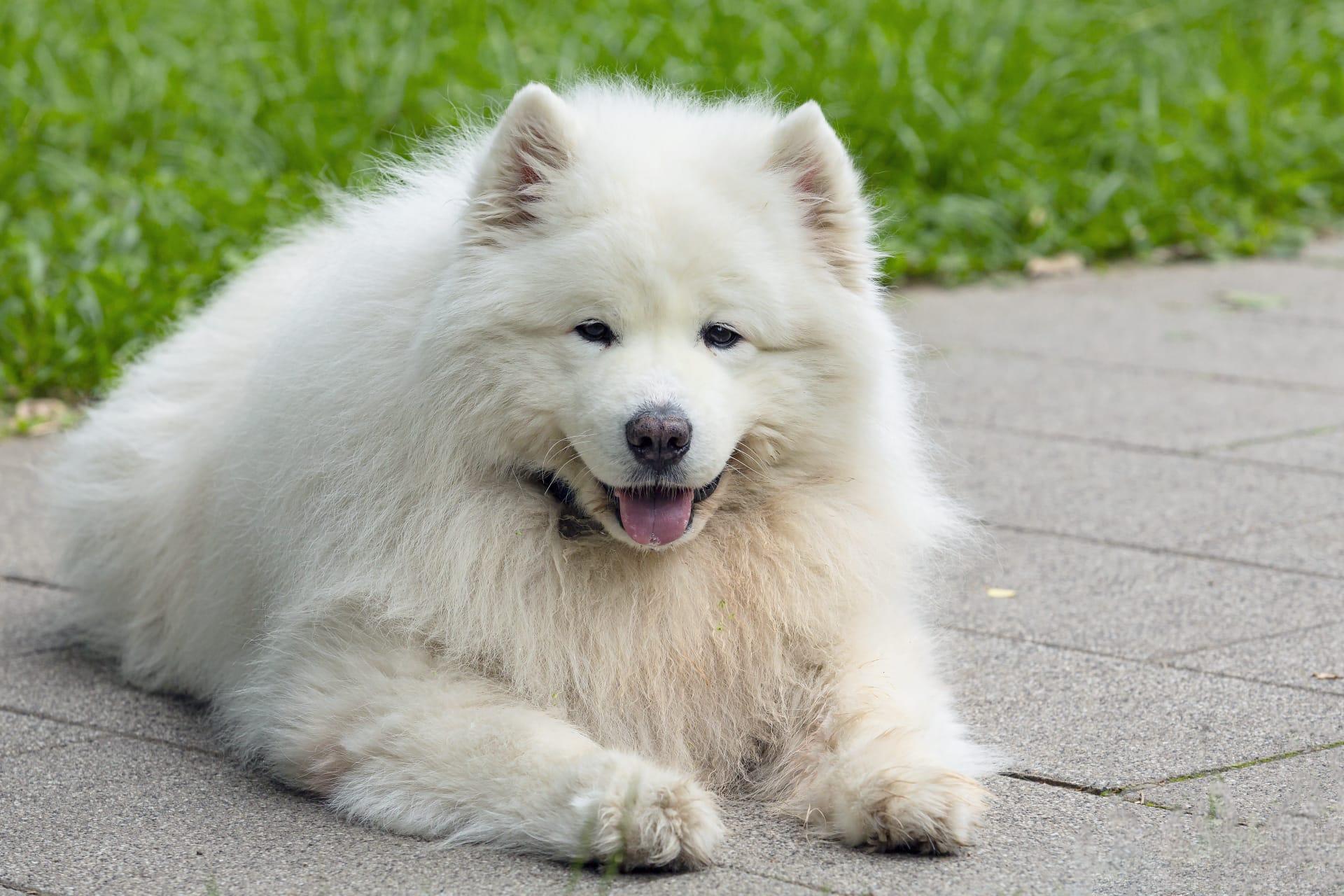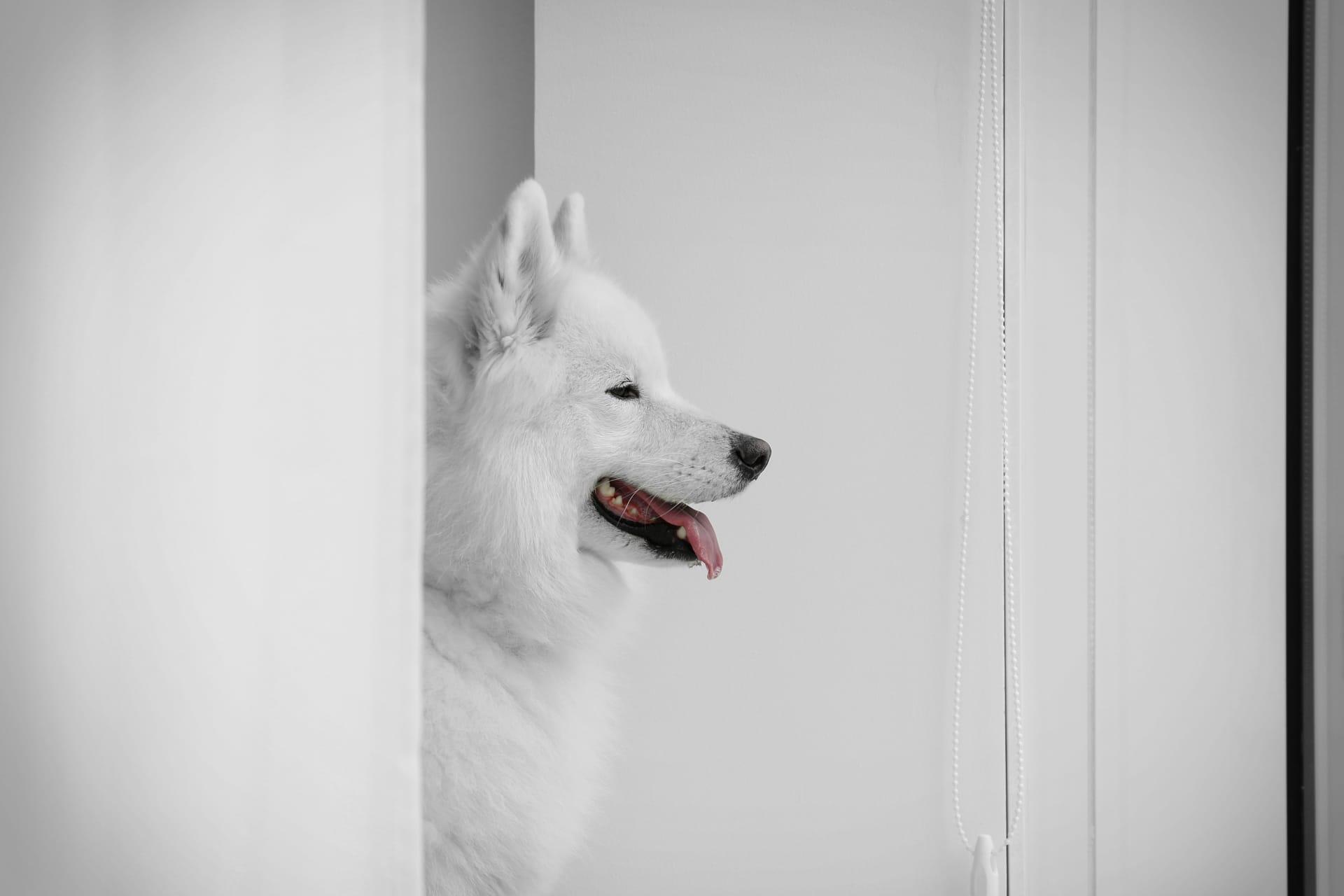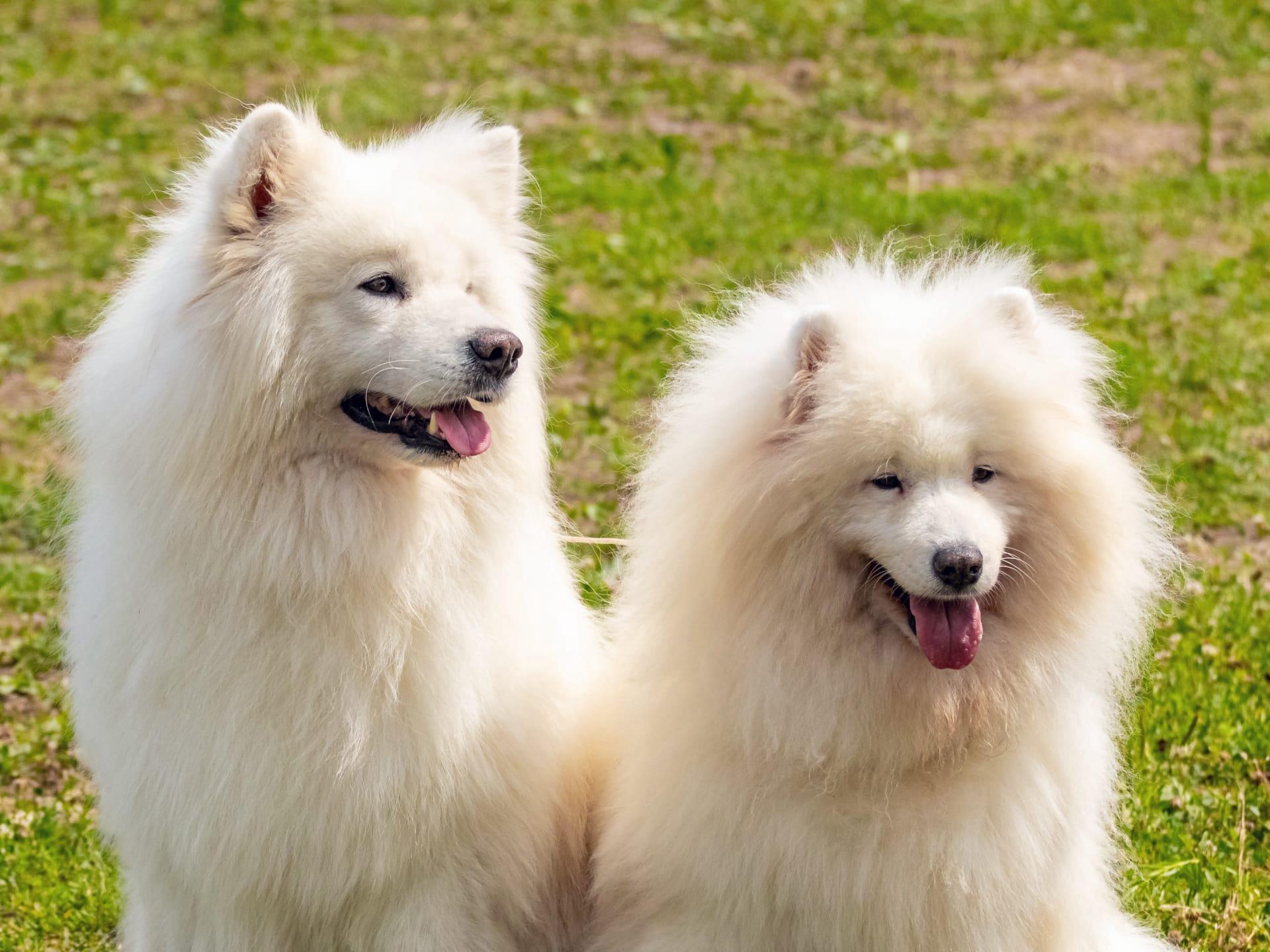1
The Samoyed, known for its fluffy white coat and friendly "Sammy smile," originated in Siberia, where it served as a versatile helper to the Samoyede people. These dogs were bred for herding reindeer, pulling sleds, and keeping their owners warm in temperatures that could plummet to -60 degrees Celsius (-76 degrees Fahrenheit). The Samoyed's coat is not just for show; it's a highly efficient insulator, consisting of a dense undercoat and a weather-resistant outer coat that can reflect the sun's rays in summer, preventing overheating despite its thickness.
Samoyeds are renowned for their gentle and friendly disposition, making them excellent family pets. This breed has a unique vocal range, often described as 'talking' to their owners with mumbles, grunts, and complex vocalizations that sound remarkably human-like. Their ability to communicate in such a diverse and expressive manner has not only endeared them to those who own them but also makes them highly responsive to training. Despite their size, with males standing between 21 to 23.5 inches at the shoulder and weighing 45 to 65 pounds, and females slightly smaller, they maintain a playful demeanor well into adulthood.

2
One fascinating aspect of the Samoyed breed is their contribution to polar exploration. In the early 20th century, Samoyeds were chosen by explorers for Antarctic expeditions due to their endurance, strength, and ability to withstand extreme cold. Notably, they were part of Ernest Shackleton's Nimrod Expedition in 1907 and Roald Amundsen's successful South Pole expedition in 1911. These dogs proved invaluable for pulling sleds over icy terrains, showcasing their remarkable resilience and work ethic in some of the harshest conditions on Earth.
Another interesting fact about Samoyeds is their "Sammy smile." This term refers to the slight upturn at the corners of their mouth, giving the appearance of a constant, cheerful grin. This unique facial feature is not just adorable but also functional, preventing drool from forming icicles in cold weather, which could be detrimental in their native frosty environments. This smile, combined with their fluffy white coat and friendly eyes, contributes to their popularity and appeal, making them one of the most photogenic dog breeds.

3
Samoyeds have a high grooming requirement due to their dense, double-layer coat. They shed heavily twice a year, during which they require daily brushing to remove loose fur and prevent matting. This shedding period is often referred to as "blowing" their coat. Interestingly, the fine, white hair that is shed can be spun into yarn and knitted into garments. This wool is warm, hypoallergenic, and does not absorb odors easily, making it a unique and practical by-product of their grooming process.
The breed is also known for its remarkable health and longevity. Samoyeds typically live between 12 to 14 years, a notable lifespan for dogs of their size. They have been bred to work hard in harsh conditions, which has contributed to a robust genetic pool. However, they can be prone to certain hereditary conditions, such as hip dysplasia and heart issues, making regular veterinary check-ups and a healthy lifestyle essential for maintaining their well-being.

4
Samoyeds possess an innate friendliness towards humans and other animals, a trait that originates from their close working and living relationship with the Samoyede people, who treated them as part of the family. This has cultivated a breed that thrives on human companionship, suffering from separation anxiety if left alone for too long. Their sociable nature makes them poor choices for guard dogs but excellent candidates for therapy and service roles, where their gentle demeanor and intuitive sensitivity to human emotions can be put to good use.
Despite their fluffy appearance, Samoyeds are surprisingly adept at staying clean. Their coat repels dirt and doesn't hold onto bad smells, meaning they require less bathing than many other breeds. This self-cleaning aspect, combined with their natural resistance to cold, has historically made them well-suited to life in snowy, outdoor environments. However, it's essential to keep them cool and hydrated in warmer climates, as their thick fur can cause overheating if proper care is not taken.

5
Samoyeds have a strong inclination towards vocalizing their feelings, which can range from barks and howls to more nuanced sounds that mimic human speech patterns. This tendency makes them very communicative pets who are not only able to express joy, alertness, or the need for attention but can also seem to participate in conversations with their human companions. Their vocal nature requires understanding and patience from their owners, who must provide consistent training and socialization to manage their talkative tendencies effectively.
The breed's name, "Samoyed," originates from the Samoyedic peoples of Siberia, reflecting the dog's historical role and cultural significance. However, it's a common misconception that the name implies a single use or characteristic. In reality, the Samoyed's versatility as a herder, sled puller, and companion illustrates the breed's adaptability and the strong bond between these dogs and their human families. This connection is a testament to their enduring legacy as a beloved breed, capable of thriving in both the snowy expanses of Siberia and the comfortable homes of their modern-day owners.